Is your HVAC system struggling to keep your home comfortable during extreme temperatures? Many homeowners in Columbus may not realize that certain signs indicate the need for immediate repair or maintenance. This article will highlight seven crucial signs you should watch for, including insufficient heating or cooling, unusual noises, and visible leaks. By recognizing these issues early, readers can schedule an emergency repair or service before small problems escalate, ensuring their systems run efficiently and effectively under Ohio’s demanding climate, while also protecting any warranties they may have.
Key Takeaways
- Uneven temperatures indicate potential HVAC system issues requiring prompt attention
- Strange noises can signal significant problems that may lead to costly repairs
- Visible leaks often signify serious underlying issues that need immediate action
- Frequent cycling suggests thermostat or clogging problems impacting efficiency and safety
- Monitoring energy bills helps identify inefficiencies and potential HVAC system malfunctions
1. Your HVAC System Is Experiencing Insufficient Cooling or Heating

Insufficient cooling or heating is a key sign that an HVAC system may need urgent attention. Homeowners should first check for noticeable temperature discrepancies compared to thermostat settings. Additionally, understanding how outdoor temperature fluctuations impact home comfort is essential. Addressing furnace issues promptly ensures optimal heating and cooling efficiency, potentially reducing utility costs while minimizing the risk of corrosion and the need for extensive furnace repair services.
Identify Temperature Discrepancies Compared to Thermostat Settings
Homeowners should routinely assess their HVAC system’s ability to match the temperature settings on their thermostat. Discrepancies between the desired and actual indoor climate can indicate a malfunction, potentially pointing to issues requiring prompt HVAC repair. In addition to affecting comfort, such problems can lead to increased levels of indoor pollutants and may strain the system, impacting its longevity.
Understand the Impact of Outdoor Temperature Fluctuations
Outdoor temperature fluctuations can significantly affect home heating and cooling efficiency. For instance, during extreme weather conditions, such as heat waves or cold snaps, an HVAC system may struggle to maintain comfortable indoor temperatures, indicating a need for immediate HVAC service. Homeowners should be aware that poor air ducts can exacerbate this issue, leading to increased energy costs and a higher risk of system failure if not addressed through regular maintenance, including proper air conditioning installation.
The air felt still and heavy, a sign that something was wrong. Then, from deep within the HVAC unit, strange sounds began to emerge, hinting at a deeper issue.
2. Unusual Noises Are Coming From the HVAC Unit
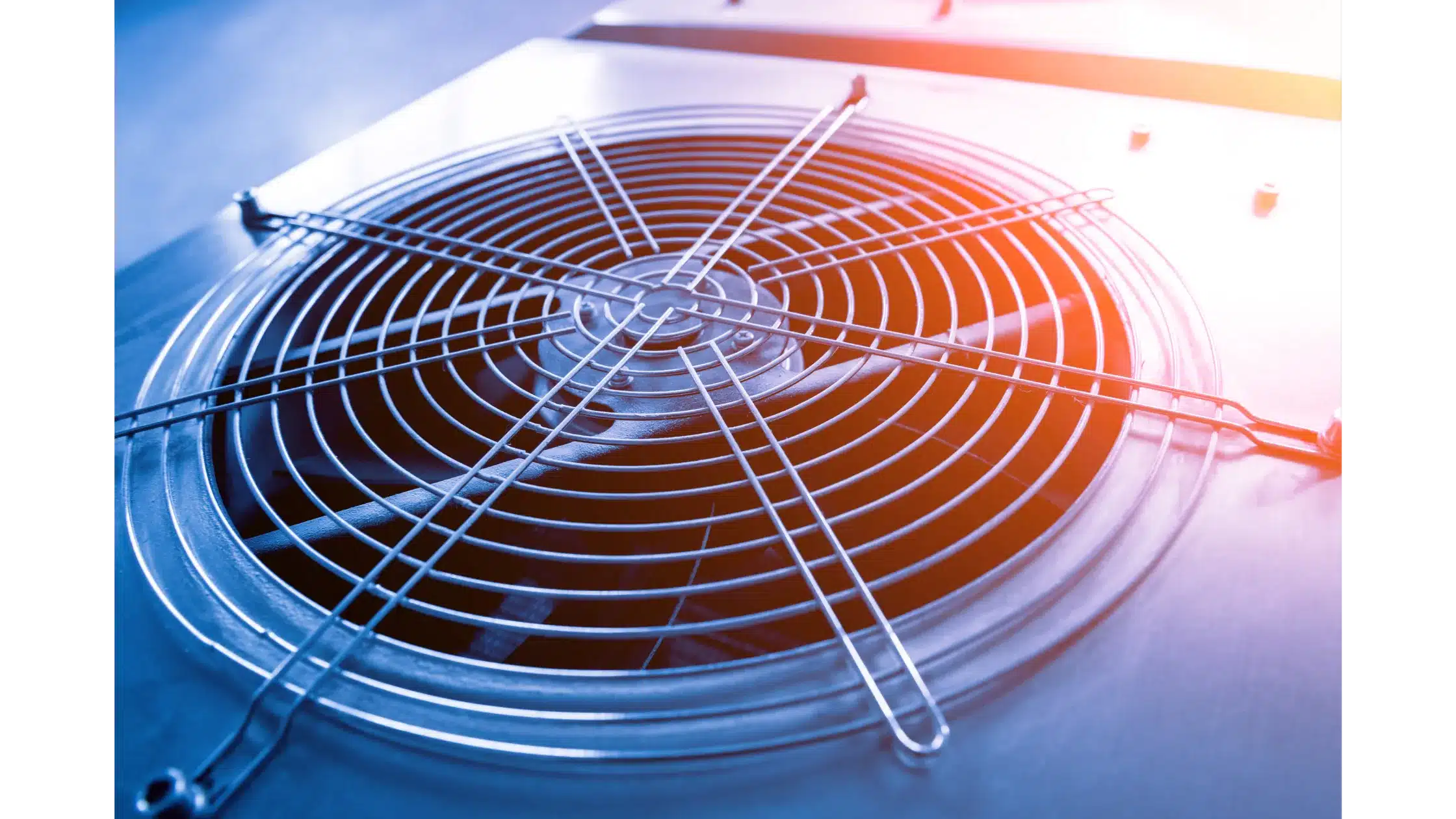
Common sounds from an HVAC unit can signal underlying issues that require attention. Homeowners should recognize these noises, as they may indicate problems such as a malfunctioning pilot light or issues with the heat exchanger. Assessing the severity of the noise is essential for determining necessary actions, which can lead to improved energy consumption and prevent costly repairs.
Recognize Common Sounds That Indicate Trouble
Homeowners should pay attention to unusual sounds emanating from their HVAC systems, as these noises often indicate serious issues that require immediate attention. Common problematic sounds include high-pitched whistling, which may signify a duct leak affecting heat transfer, or banging noises, indicative of loose components potentially leading to malfunction. Recognizing these signs early can prevent more extensive repairs, allowing the system to maintain optimal performance and efficiency, especially during extreme temperatures.
- High-pitched whistling may indicate duct leaks affecting heat transfer.
- Banging noises could signal loose components or issues with the thermostat.
- Gurgling sounds could suggest freezing or blockage in the system.
- Rattling may indicate loose screws or components within the HVAC unit.
- Sudden loud noises might require inspection of the sump pump or other related systems.
Determine the Severity of the Noise and Required Actions
Determining the severity of unusual noises from an HVAC unit is critical for preventing further issues, especially during a winter storm when reliable heating is paramount. Homeowners should assess whether the noise is consistent or intermittent; for instance, a rattling sound may indicate loose parts, while certain gurgling noises could suggest a refrigerant issue or a potential gas leak, which requires immediate professional evaluation. By addressing these concerns promptly, such as ensuring dust isn’t clogging filters or ductwork, homeowners can maintain system efficiency and avoid costly repairs down the line.
The strange sounds from the HVAC unit grew louder, hinting at deeper issues. Soon, the system began to cycle more frequently, a sign that something was clearly amiss.
3. Frequent Cycling of the HVAC System
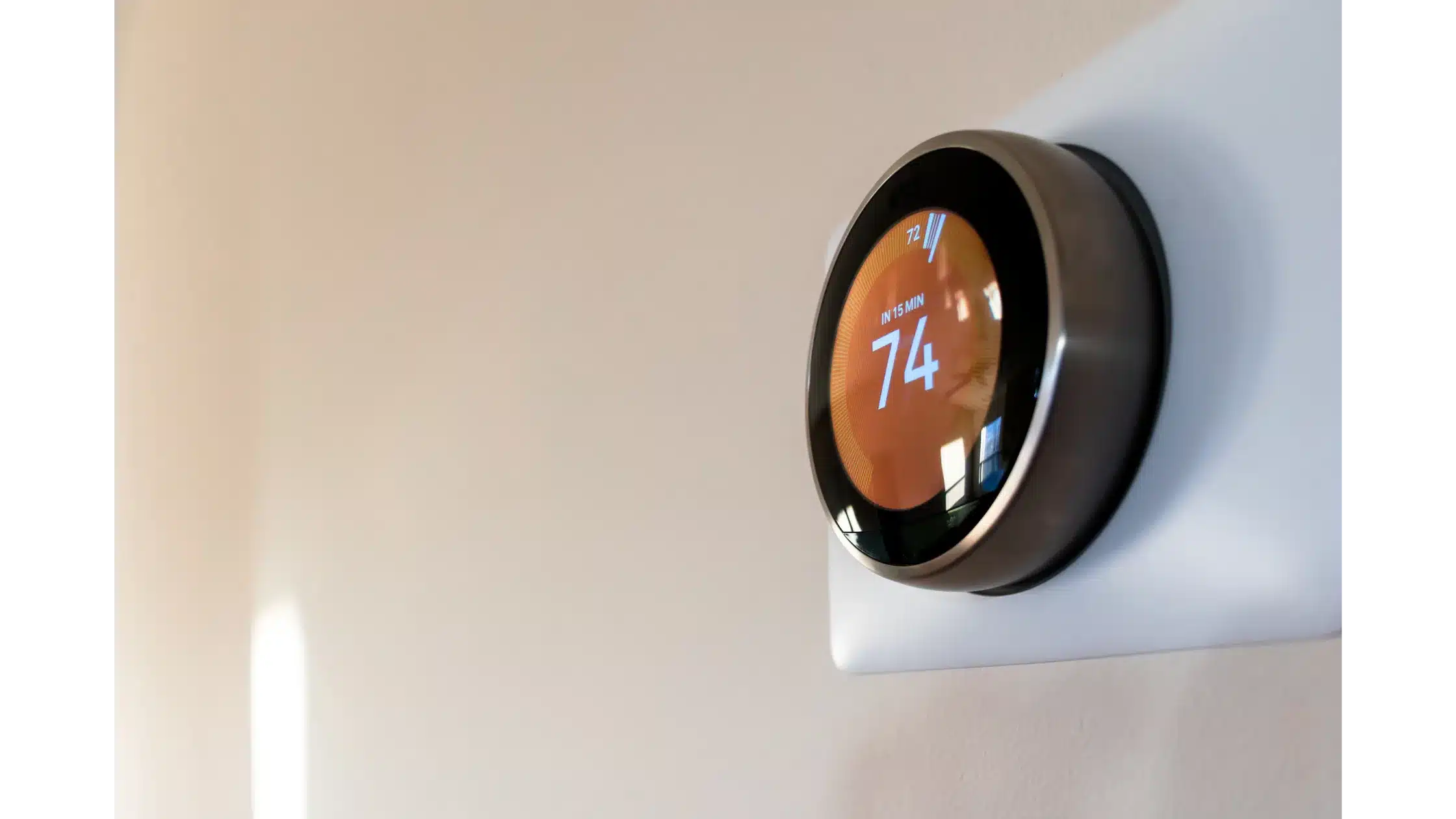
Frequent cycling, or short cycling, occurs when the HVAC system turns on and off repeatedly without reaching the desired temperature. This issue can stem from several factors, including malfunctioning thermostats or clogged air filters. Understanding these causes is vital, as it relates to energy efficiency and safety. Addressing such concerns through professional HVAC services can significantly enhance system performance and prevent further complications.
Analyze the Meaning of Short Cycling
Short cycling in an HVAC system signifies a serious issue, as the unit repeatedly turns on and off without achieving the desired temperature. This behavior often results from improper calibration or a malfunctioning thermostat, indicating the need for an immediate inspection. Additionally, factors such as high humidity levels or obstructed air filters can exacerbate this complexity, reducing the system’s efficiency and lifespan. Regular professional evaluations and timely air conditioner installation can help mitigate these problems, ensuring consistent comfort and efficiency in Ohio’s varying climate.
Identify Potential Causes Such as Thermostat Issues
Frequent cycling of an HVAC system can often be traced back to issues with the thermostat, which may not accurately regulate the temperature. A malfunctioning thermostat can misrepresent indoor conditions, causing the furnace to work inefficiently and potentially leading to increased energy costs. Homeowners should consider the importance of regular furnace maintenance to ensure the thermostat functions correctly; otherwise, unresolved problems may contribute to a decline in indoor air quality and other risks, such as carbon monoxide buildup.
Repeated cycling of the HVAC system can signal trouble, but the real warning signs lie just beneath the surface. A closer look at the area around the unit may reveal leaks or moisture that demand immediate attention.
4. Visible Leaks or Moisture Around the HVAC Unit

Visible leaks or moisture around an HVAC unit can indicate underlying issues that require attention. Understanding the types of leaks, such as those from a valve or a heat pump, is essential in assessing potential damage. If ignored, these leaks can contribute to mold growth and increased wear and tear on the heating element and other components, leading to costly repairs.
Evaluating moisture levels is crucial for preventing long-term damage. Homeowners should take immediate action to address any visible leaks, particularly those related to the sump system, to maintain the system’s efficiency and protect their home environment.
Understand the Types of Leaks and Their Implications
The presence of visible leaks or moisture around an HVAC unit often points to serious issues that merit immediate attention. Different types of leaks, such as those originating from refrigerant lines or drainage systems, can lead to significant damage if not addressed promptly. Homeowners should be alert to any unusual odors that may indicate carbon buildup, signaling an emergency service requirement to prevent hazardous conditions. Engaging a qualified technician to assess these issues can help avoid costly repairs and ensure optimal system performance.
Evaluate the Potential for Mold and Other Damages
Visible leaks or moisture around an HVAC unit can create an environment conducive to mold growth, negatively impacting indoor air quality. Accumulation of debris due to leaks may exacerbate noise issues, as contaminants can interfere with furnaces and other system components. Homeowners should prioritize scheduling online inspections whenever moisture is detected; prompt attention can prevent further damage, ensuring a healthier living space and extending the lifespan of the HVAC system.
Moisture around the HVAC unit could signal deeper issues lurking within. As the air tugs at the senses, strange odors might rise, hinting at problems that cannot be ignored.
5. Strange Odors Emitted From the System
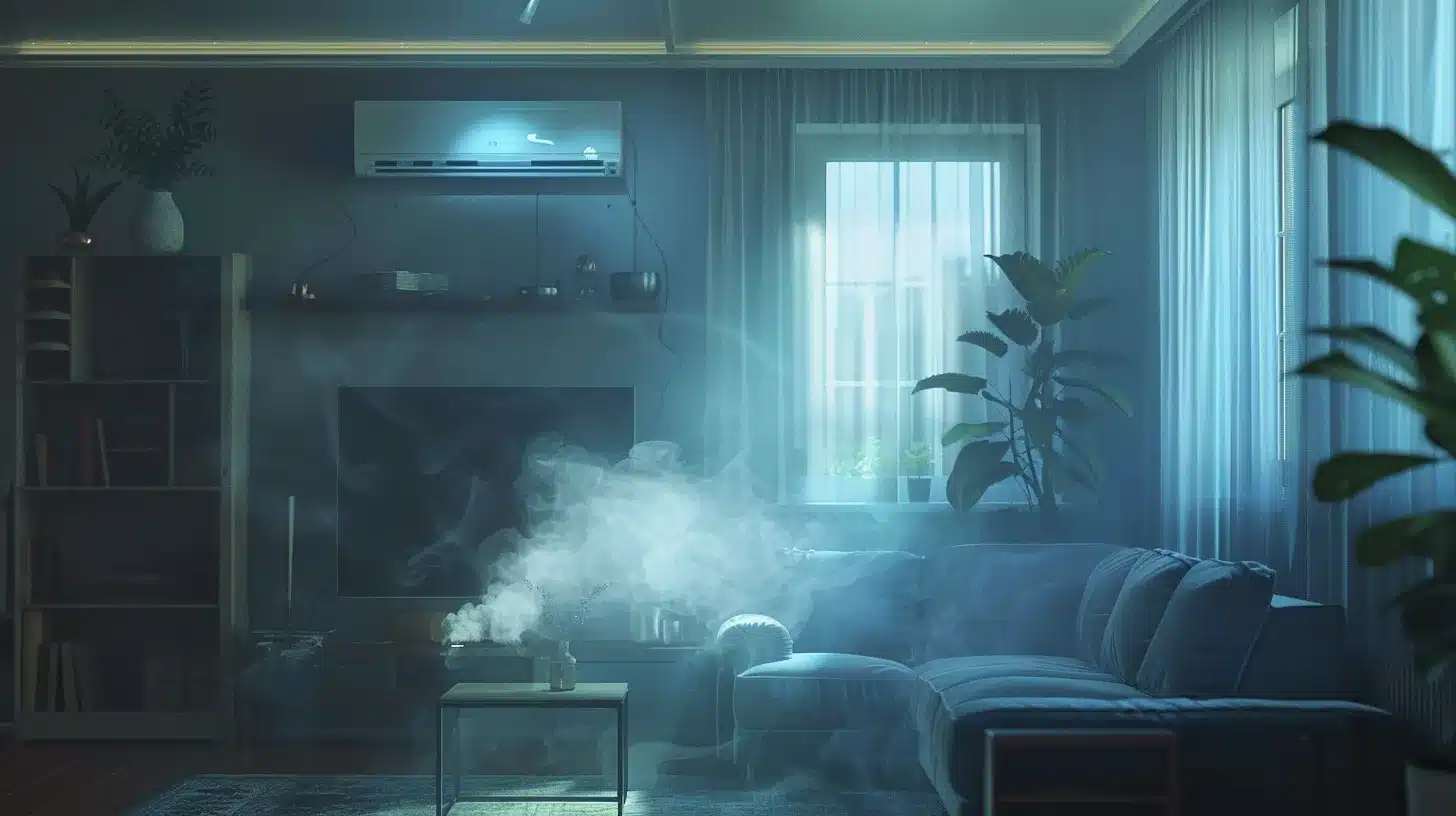
Different odors emitted from an HVAC system may range from harmless to alarming, indicating the need for air conditioning repair. Homeowners should be aware of the risks associated with refrigerant leaks or burnt wiring that could pose fire hazards. Understanding airflow issues not only ensures comfort but also addresses potential health risks, making professional HVAC assessments vital for safety and system efficiency.
Differentiate Between Harmless and Concerning Smells
Homeowners should be able to differentiate between harmless and concerning smells that emanate from their HVAC system. Mild odors, such as a dusty scent when the system first turns on, may simply indicate accumulated dust and debris that needs to be cleared. In contrast, persistent smells like burning or a strong chemical odor could signal serious issues, such as electrical wear or refrigerant leaks, which require immediate attention to prevent hazards and ensure efficiency.
- Dusty smell may indicate dust buildup.
- Burning smell can signal electrical wear.
- Chemical odors could suggest refrigerant leaks.
- Mildewy smell points to moisture issues.
- Sweet smell may indicate an active refrigerant leak.
Learn About Potential Fire Hazards and Health Risks
Strange odors from an HVAC system can signal potential fire hazards and health risks that need addressing. For instance, a burning smell may indicate faulty electrical components within the furnace installation, which could pose serious dangers if ignored. Homeowners should also remain vigilant for chemical odors, as these could suggest refrigerant leaks, warranting an emergency call to a qualified technician to prevent health complications and fire risks associated with malfunctioning sensors or issues in the condenser.
- Burning smells may point to electrical issues in furnace installation.
- Chemical odors can indicate refrigerant leaks posing health risks.
- Ignoring these signs can lead to fire hazards in the home.
- Timely attention ensures safety and efficiency in HVAC operation.
The odd smells lingered longer than they should. Soon after, the family’s energy bills began to climb, leaving them to wonder if the two were connected.
6. Noticeable Increase in Energy Bills
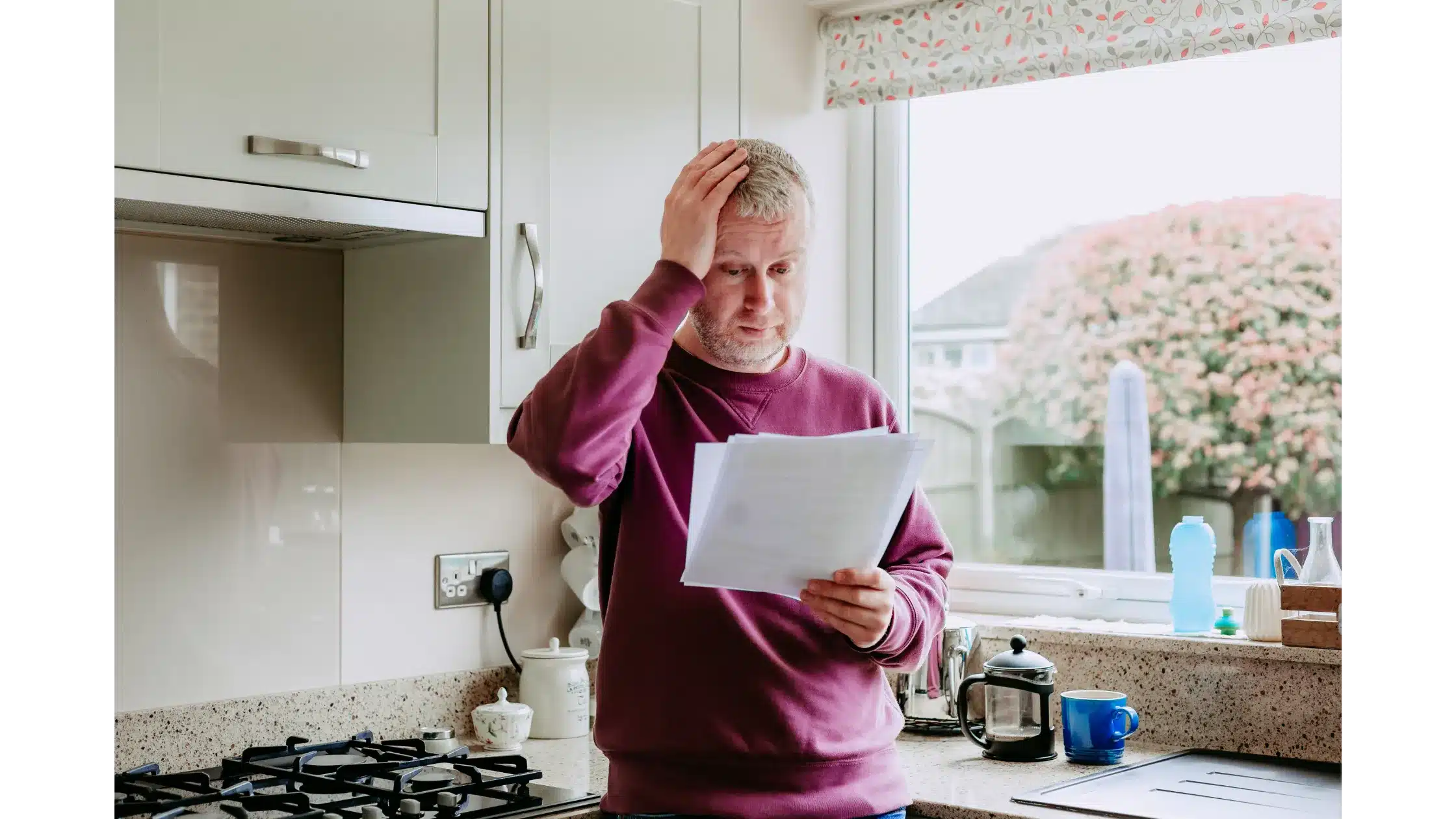
A noticeable increase in energy bills often signals underlying issues with a residential hvac system. Homeowners should compare current expenses to historical usage to pinpoint any unusual spikes. Investigating potential factors, such as an inefficient compressor or a malfunctioning system, is essential. Additionally, ensuring a properly functioning air purifier and a carbon monoxide detector can help maintain energy efficiency and enhance home safety.
Compare Current Expenses to Historical Usage
Monitoring energy bills closely allows homeowners to detect anomalies that reflect HVAC system efficiency. By comparing current expenses with historical usage, it becomes easier to spot unusual spikes that may indicate issues such as a malfunctioning furnace or a leak within the system. Understanding the frequency of these changes can guide proactive maintenance strategies, including timely furnace repair, ensuring improved performance and better indoor air quality.
Investigate Potential Factors Contributing to Increased Costs
Homeowners in Columbus experiencing a noticeable increase in energy bills should thoroughly investigate potential factors contributing to higher consumption. Issues such as a gas furnace operating inefficiently can significantly inflate energy costs. Additionally, moisture problems in the crawl space may create an environment for mold growth, which can compromise HVAC efficiency. Seeking professional repair services can help identify these issues and restore optimal performance of the HVAC system, ultimately reducing energy expenses.
As the bills climbed higher, the signs of trouble became too clear to ignore. The system, once reliable, began to show its age, leaving one to wonder what lay beneath the surface.
7. System Components Show Signs of Wear and Tear
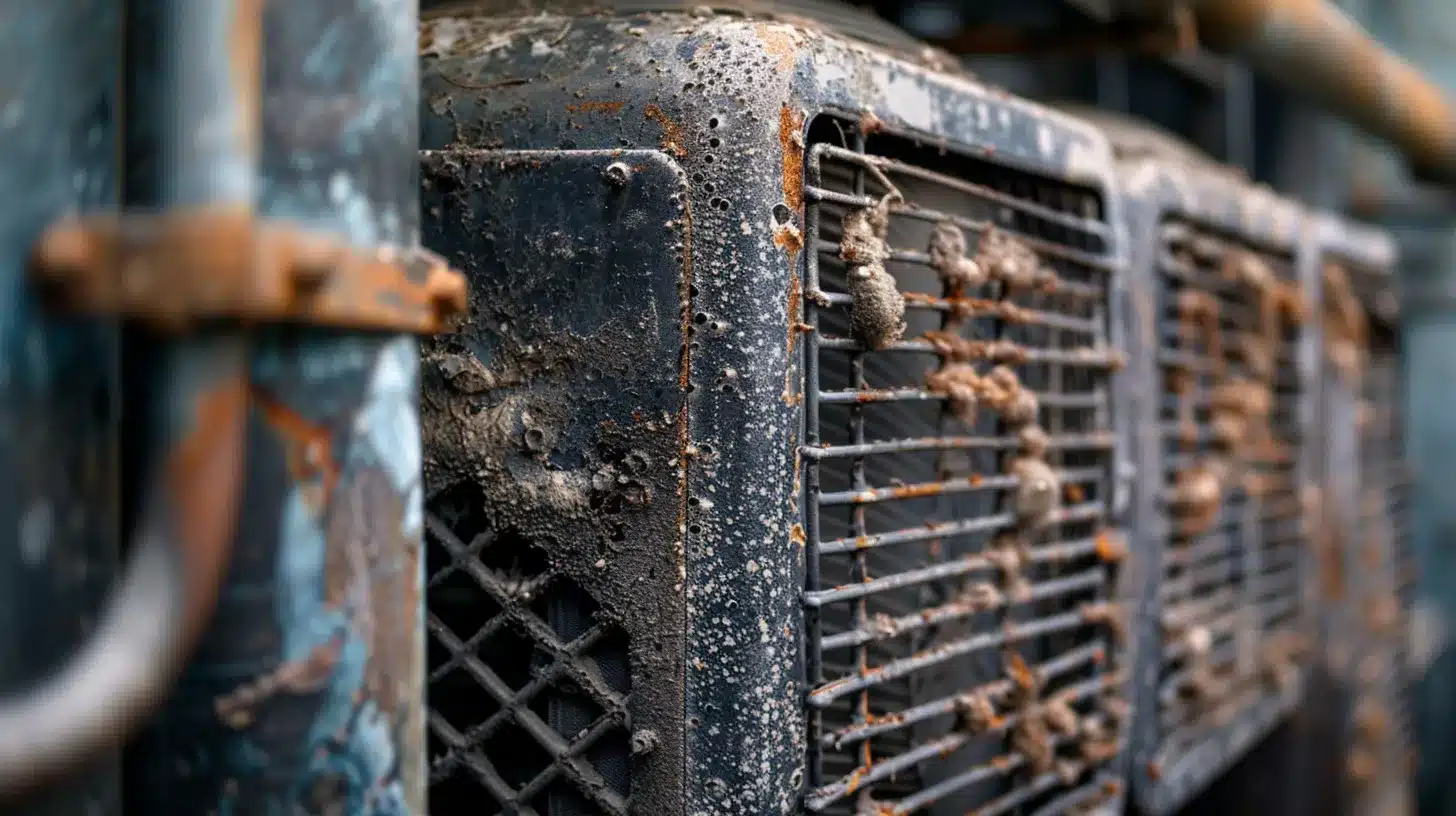
Assessing the condition of HVAC components, including filters, ducts, and coils, is vital for maintaining system efficiency. Regular inspections and maintenance help identify potential issues, ensuring safety and customer satisfaction. This section covers key aspects of detecting signs of wear and tear, highlighting the impact of neglect on energy costs and the importance of plumbing services in preventing problems related to carbon monoxide emissions.
Assess the Condition of Filters, Ducts, and Coils
Assessing the condition of filters, ducts, and coils is essential for ensuring that an HVAC system operates efficiently and effectively in Ohio’s varying climate. Dirty or damaged filters can restrict airflow, leading to increased power consumption and prolonged downtime during hot or cold spells. Homeowners should regularly inspect these components and possess the knowledge to replace filters as needed; this simple maintenance task can significantly enhance ventilation and prevent issues, particularly after a power outage when the system might require a bit more care to return to optimal performance.
Understand the Importance of Regular Inspections and Maintenance
Regular inspections and maintenance play a vital role in ensuring HVAC systems operate efficiently and reliably, particularly in climates like Columbus, Ohio. Homeowners should schedule routine check-ups with HVAC technicians to spot potential issues before they escalate. In addition, modern advancements such as smart thermostats can optimize energy usage, and proper air conditioning services can further enhance comfort levels while extending the lifespan of the system.
- Routine check-ups can identify potential issues early.
- Regular maintenance enhances system efficiency.
- Smart thermostats contribute to energy optimization.
- HVAC technicians provide expert assessments and services.
- Proper air conditioning services improve comfort and lifespan.
Signs of wear and tear signal that something is amiss. Delaying action could lead to bigger problems; contacting a professional is the next step to take.
Contact a Professional for Immediate Assistance
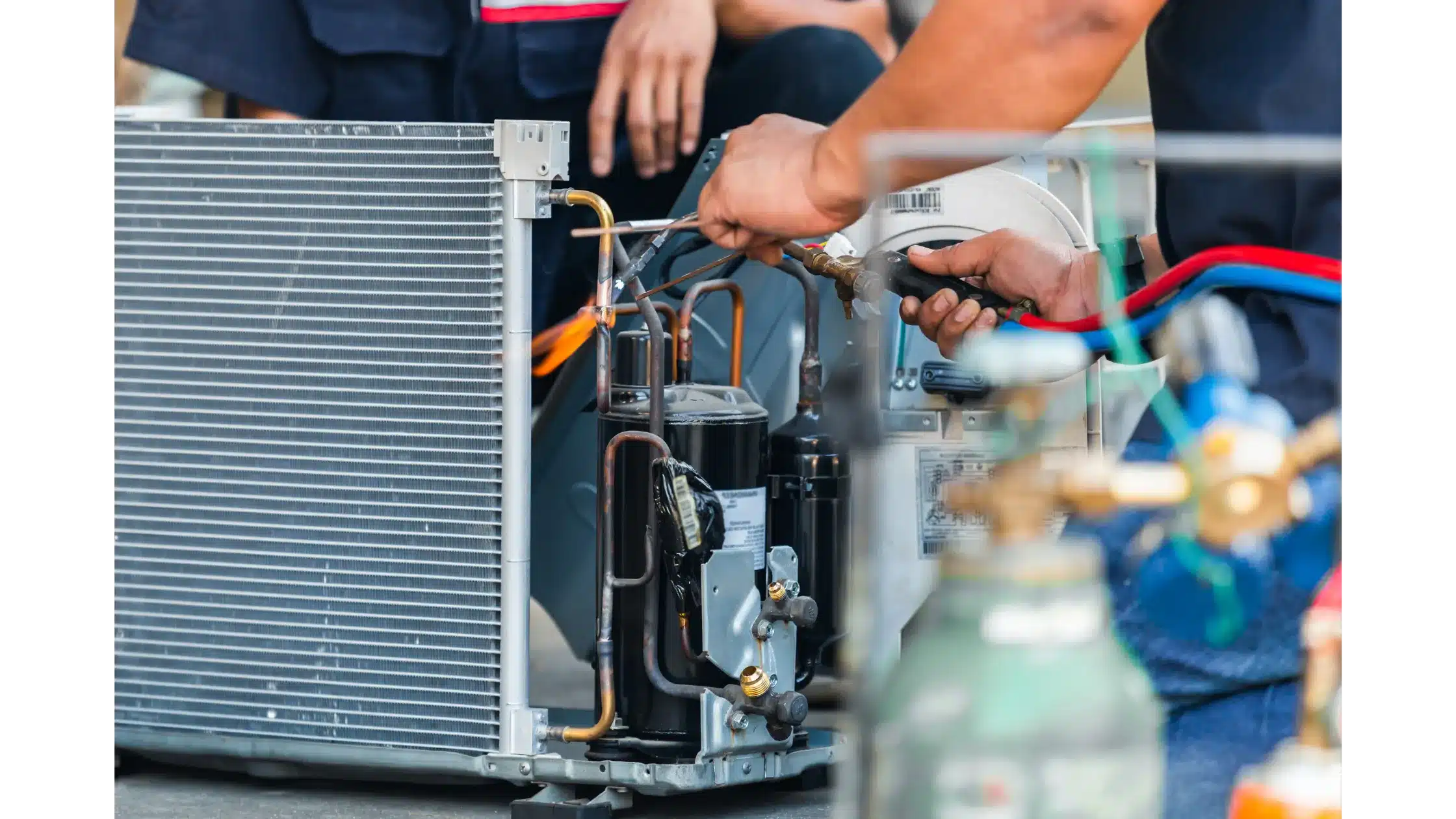
Homeowners should gather key details about their HVAC issues, such as unusual sounds or visible leaks, to share with technicians effectively. Scheduling a diagnostic visit without delay allows for timely assessment and repairs, ensuring optimal system performance. Issues like a malfunctioning ductless mini split or irregular flame operation need prompt attention to maintain efficiency and safety.
Gather Key Details to Share With Technicians
When contacting HVAC technicians for repairs, homeowners should gather key details about their system’s performance issues, including any unusual noises, visible leaks, or noticeable temperature inconsistencies. Providing specific information about when the problems began can help technicians diagnose issues more effectively. By being prepared with these insights, homeowners can ensure a more efficient and productive repair process, ultimately leading to quicker resolutions and restored comfort in their home environment.
Schedule a Diagnostic Visit Without Delay
Scheduling a diagnostic visit without delay is crucial for homeowners in Ohio noticing any signs of HVAC trouble. Prompt action helps technicians identify and rectify issues before they escalate, thereby preventing more extensive and costly repairs. For instance, persistent unexplained temperature fluctuations or unusual noises can indicate serious malfunctioning components that require immediate attention to ensure continued comfort and safety in the home:
| Sign of Trouble | Recommended Action |
|---|---|
| Unusual Noises | Contact a technician to assess potential issues and ensure safety. |
| Visible Leaks | Schedule immediate repairs to prevent water damage and mold growth. |
| Temperature Discrepancies | Book a diagnostic visit to evaluate the system’s performance. |
| Frequent Cycling | Have professionals inspect the thermostat and system efficiency. |
Conclusion
Recognizing the seven crucial signs indicating that a HVAC system requires immediate repair or maintenance is essential for homeowners. Symptoms such as insufficient heating or cooling, unusual noises, and visible leaks can lead to costly repairs and diminished efficiency. Taking proactive measures to address these issues not only ensures comfort but also enhances system longevity and safety. By prioritizing regular inspections and timely repairs, homeowners can significantly reduce energy costs and maintain a healthy living environment.
Reach out to us
Be sure to reach out to us if you have issues with your heating and/or cooling system or need an install. Our number is 614-863-6666, and we are conveniently located in Columbus, Ohio.
